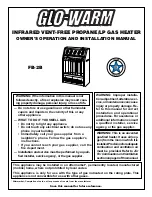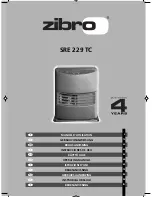
6 720 817 281 (2017/05)
Greentherm 9800 SEO 160/199 | SECO 199
Installation for modular homes | 15
5
Installation for modular homes
5.1
Mounting installation for modular homes
When installing this appliance on the outside of a modular
home, the unit must be additionally secured at the bottom of
the water heater as shown in fig. 9. Use the included screws to
secure the brackets at the bottom of the water heater to the
wall. If the wall is sheathed with plaster or drywall, it is
recommended that a support board be first attached across a
pair of studs at the bottom of the unit as shown in fig. 6.
Fig. 9
Mounting the heater on modular homes
6
Installation instructions
6.1
Gas piping & connections
Before connecting the gas supply, check the rating plate on the
right side of the heater to be sure that the heater is rated for the
same gas to which it will be connected.
In the United States: The installation must conform with local
codes or, in the absence of local codes, the National Fuel Gas
Code ANSI Z223.1/NFPA 54.
In Canada: The Installation must conform to CGA B149
INSTALLATION CODES and/or local installation codes.
GAS CONNECTIONS
▶ Install a manual gas shut off valve on the gas supply line
within easy reach of the appliance.
▶ Install a union when connecting the gas supply.
▶ Gas connection to the water heater is a ¾ " NPT. See
chapter 6.1.1 for the minimum internal pipe diameter
required.
▶ Undersized flexible appliance connector is not permitted.
▶ National Fuel Gas Code requires that a sediment trap (drip
leg) be installed on gas appliances not so equipped. The
drip leg must be accessible and not subject to freezing
conditions. Install in accordance with the
recommendations of the serving gas supplier, see fig. 11.
DANGER:
Explosion hazard!
▶ DO NOT connect to an unregulated or
high pressure propane line or to a high
pressure commercial natural gas line.
DANGER:
Explosion hazard!
▶ The heater must be isolated from the
gas supply piping system during any
pressure testing of that system at test
pressures equal to or more than 0.5
psig. If overpressure has occurred, such
as through improper testing of the gas
lines or malfunction of the supply
system, the gas valve must be checked
for safe operation.
















































